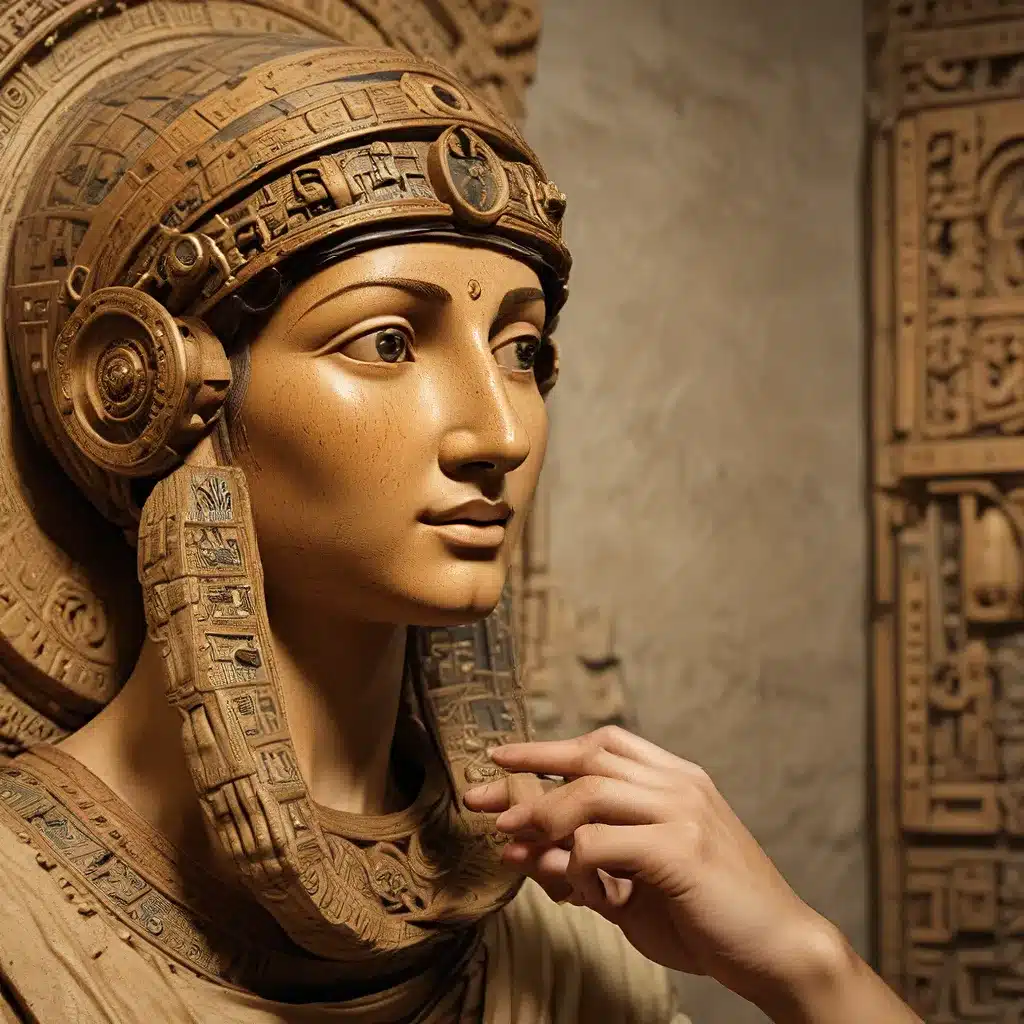
Humanity’s fascination with the past has long been fueled by the remarkable discoveries that shed light on the ingenuity and capabilities of ancient civilizations. From the printing press that revolutionized the dissemination of knowledge to the laser technology that is uncovering hidden wonders of the Maya culture, the tools and technologies of the past have shaped the course of human history in profound ways.
The Printing Press: Accelerating the Renaissance and Scientific Revolution
The invention of the mechanical movable type printing press around 1436 by Johannes Gutenberg is considered a pivotal moment in the history of human progress. This transformative technology allowed for the mass production of books, pamphlets, and other printed materials, vastly improving the accessibility of information and the spread of ideas.
Prior to the printing press, the process of book production was a slow and laborious task, with hand-copied manuscripts being the primary means of preserving and transmitting knowledge. This limited the availability of books to the wealthy elite and the most prestigious institutions, such as monasteries and universities. The printing press, however, revolutionized this landscape, making books more affordable and widely available to a growing literate population.
The impact of the printing press was felt across numerous realms, from the Renaissance to the Protestant Reformation and the Enlightenment. By enabling the rapid dissemination of ideas, the printing press accelerated the rediscovery and sharing of ancient knowledge, fueling the intellectual and cultural renaissance that swept through Europe. As historian Ada Palmer explains, “Suddenly what had been a project to educate only the few wealthiest elite in this society could now become a project to put a library in every medium-sized town and a library in the house of every reasonably wealthy merchant family.”
The printing press also played a crucial role in the Protestant Reformation, empowering religious reformers like Martin Luther to widely publish their messages and challenge the authority of the Catholic Church. “Printing is the ultimate gift of God and the greatest one,” Luther famously declared, as his writings reached a vast audience and fueled the spread of the Reformation.
Moreover, the printing press had a profound impact on the advancement of science. By enabling the rapid and accurate dissemination of scientific findings and experimental data, the printing press allowed for a level of collaboration and progress that was previously unimaginable. As historian Elizabeth Eisenstein noted, the printing press’s “biggest gift to science” was not just the speed at which ideas could spread, but the accuracy with which the original data were copied, allowing scientists to trust the fidelity of existing information and focus on breaking new ground.
Laser Technology and the Rediscovery of the Maya
In recent decades, another technological innovation has revolutionized our understanding of ancient civilizations: lidar (light detection and ranging) technology. This aerial mapping system, using laser pulses, has yielded remarkable insights into the Maya culture, a sophisticated Mesoamerican society that flourished from around 250 AD to 900 AD.
However, the application of lidar technology has completely transformed the field of Maya archaeology. Reese-Taylor recounts the excitement of her team’s lidar survey, which mapped 100 square kilometers in just a few days, yielding “unparalleled revelations” about the Maya civilization that were previously invisible to ground-based exploration.
The lidar scans have uncovered a wealth of previously unknown information, including the discovery of the oldest and largest Maya structure, the surprising complexity of Maya cities and their interconnected networks, and the evidence of a sophisticated stone-working industry. Additionally, these scans have led to the identification of nearly 500 new Mesoamerican sites, including those built by the Maya.
Unearthing the Secrets of the Past through DNA Analysis
In addition to the groundbreaking discoveries enabled by lidar technology, another cutting-edge tool is revolutionizing our understanding of ancient civilizations: DNA analysis. This powerful technique is shedding light on the agricultural practices, environmental management, and even the genetic diversity of ancient societies.
The potential of DNA analysis to uncover the secrets of the past is truly exciting, as it allows researchers to delve deeper into the lives and practices of ancient civilizations, going beyond the physical artifacts and architectural remains. As this technology continues to evolve, it promises to revolutionize our understanding of how these societies thrived and adapted to their environments.
The Curious Teenager and the Lost Maya City
The power of technology to uncover the mysteries of the past is exemplified by the story of William Gadoury, a teenager from Quebec who developed a fascinating theory about the relationship between the ancient Maya and the constellations. Using readily available mapping tools like Google Earth and ArcGIS, Gadoury was able to identify the potential location of an undiscovered Maya city, leading him on a journey deep into the Mexican jungle to prove his hypothesis.
While a lidar survey of Gadoury’s theorized site is yet to be completed, his story highlights the power of technology to empower individuals to make their own contributions to the understanding of ancient civilizations. As Reese-Taylor notes, “We’re really in kind of the infancy of that particular new technology and analysis. And I think it’s going to just get better and better. We’re going to be able to see more and more.”
The technological innovations that have transformed our understanding of the past, from the printing press to lidar and DNA analysis, demonstrate the incredible potential of human ingenuity and the relentless pursuit of knowledge. As we continue to uncover the secrets of ancient civilizations, we are not only expanding our historical understanding but also inspiring the next generation of curious minds to push the boundaries of what’s possible.


